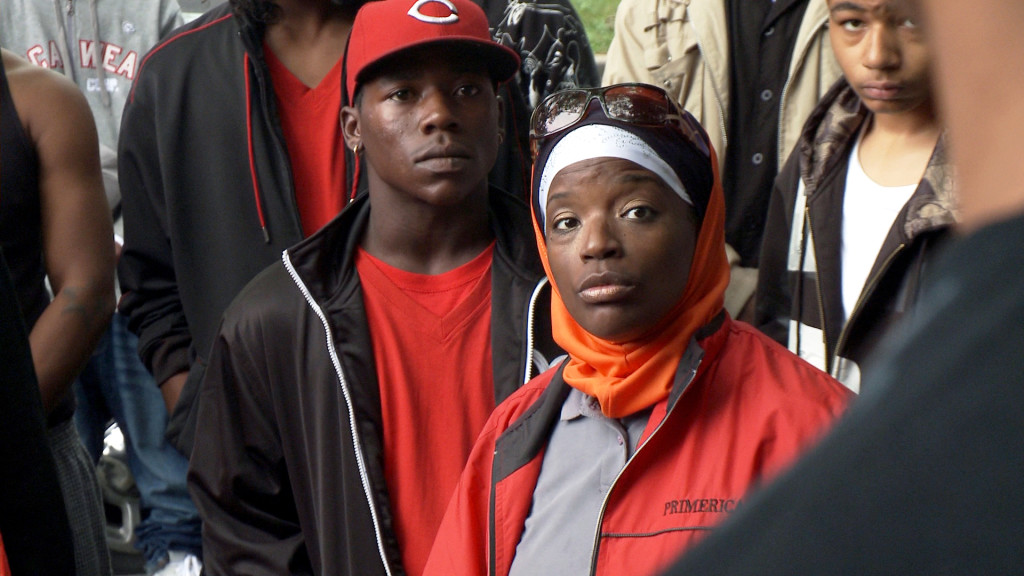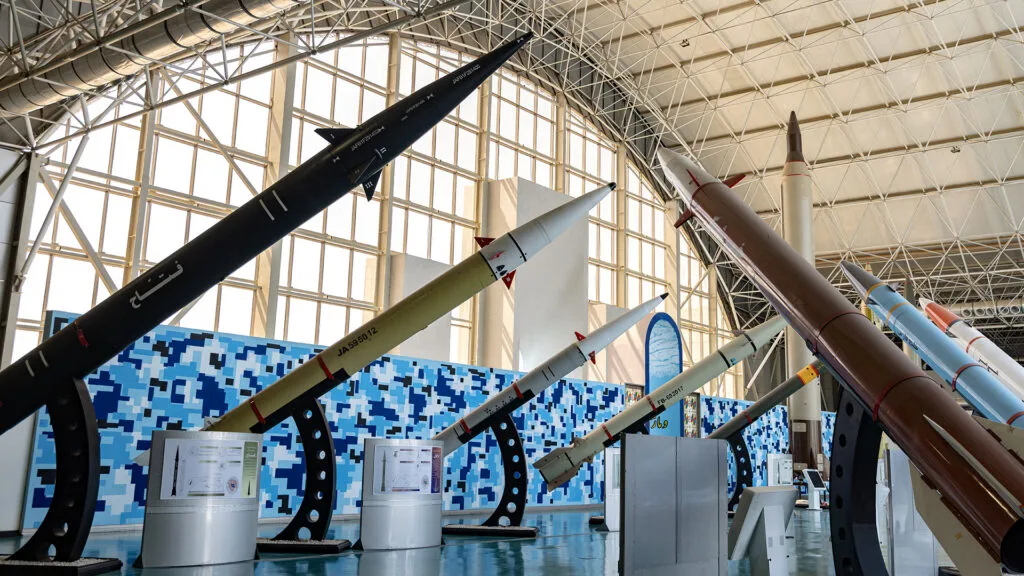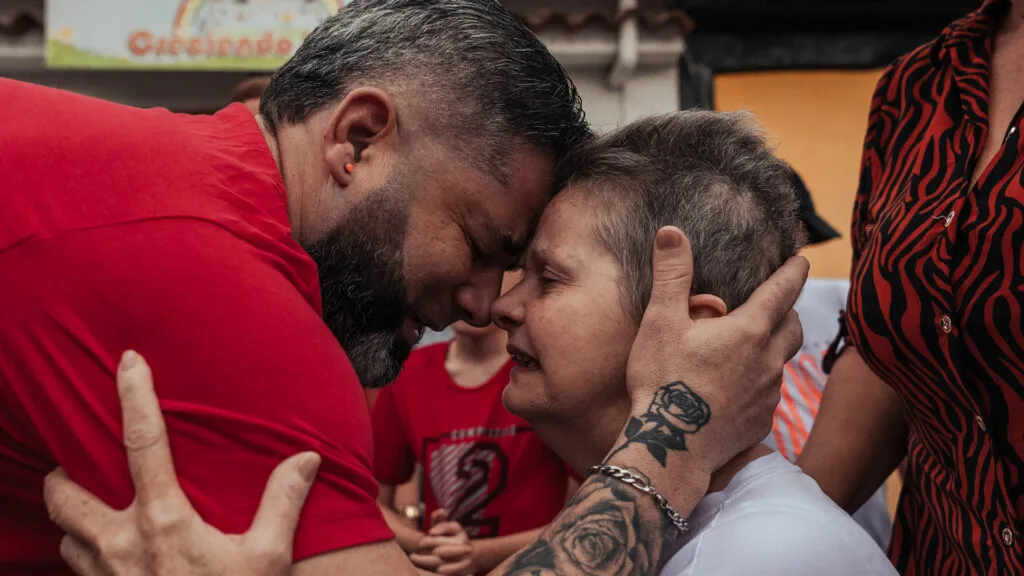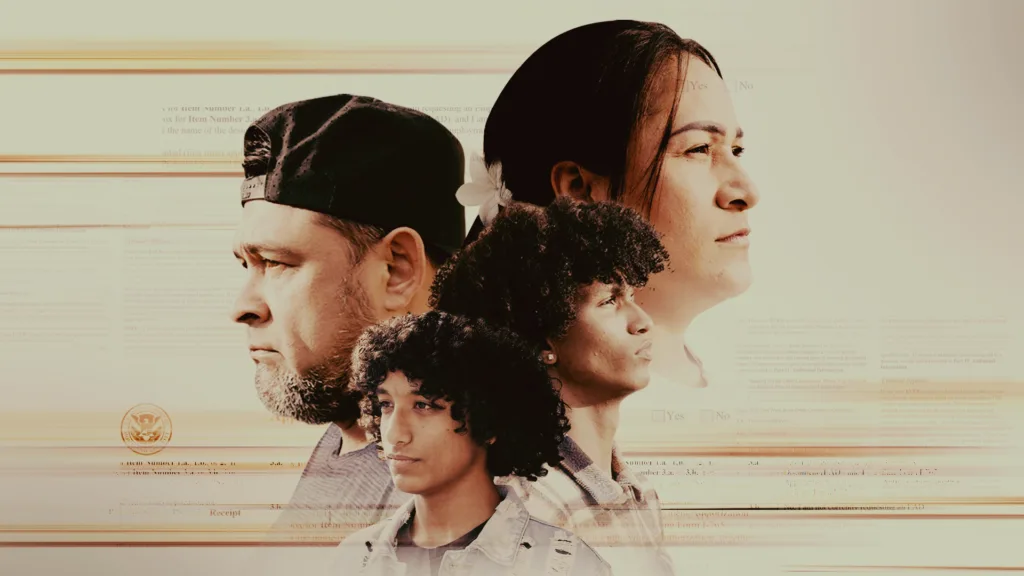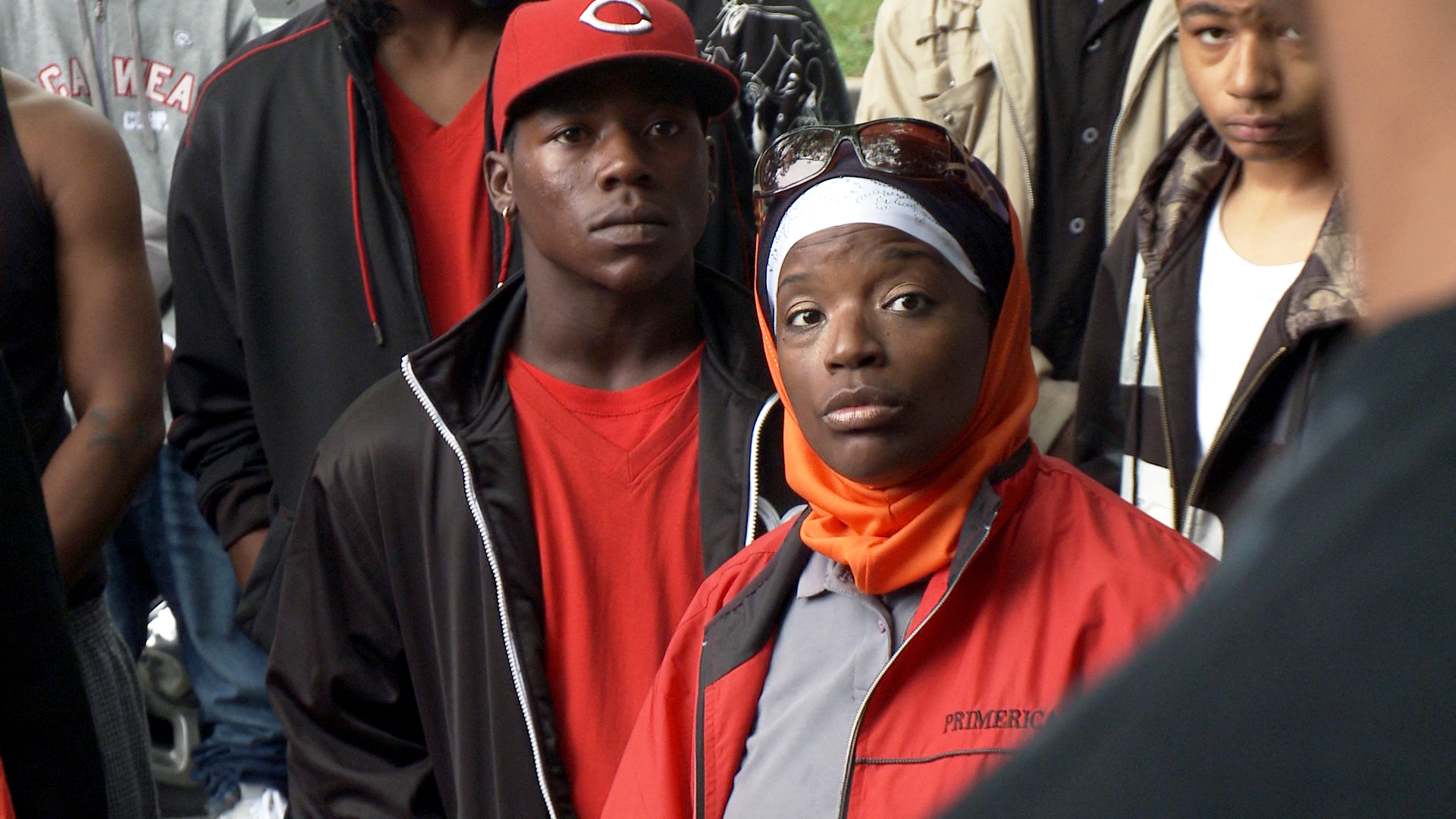A Digital Memorial For Victims of Violence

February 16, 2012
Share
“Luis was killed trying to sign Michael’s altar,” 19-year-old Ashley tearfully explains in The Interrupters. “I held him until his last breath. I didn’t want to let him go.” The shrines for Michael Vilella, who was 21 when he was shot outside Ashley’s home, and Luis Garcia, just 17, are just feet apart from one another.
As they spent a year in Chicago following the lives of residents grappling with urban violence, the filmmakers witnessed how shrines were a powerful way for mourners deal with their anger and grief over losing a loved one. “It’s one thing to do to go to a funeral and sit quietly, but a shrine is a chance for people to really express their feelings in a more public way than a funeral,” explains director Steve James. “They serve a lot of functions for mourners, but they are also fleeting.”
Once the funeral takes place, the police often remove the shrine. “Understandably,” James adds, “because if they didn’t, the shrines would be everywhere in some of these neighborhoods.”
To coincide with FRONTLINE’s broadcast of The Interrupters, Kartemquin Films has launched an interactive site — funded by ITVS and the Tribeca Film Institute and produced with Kounterattack Design — that allows viewers to explore the stories behind the shrines and memorial sites featured in an emotional sequence from the film.
As you watch the sequence, you’ll see related content appears for each of the 10 shrines, including video interviews with loved ones, photos of the dead, maps of where the individuals were killed and news reports about what happened.
“It has to stop. This is ridiculous,” says 20-year-old Tatiana Hamer in one video interview, as she stands next to a shrine to her 17-year-old brother Corey McClaurin, who was shot multiple times in his car.
The interactive shrine sequence was the brainchild of the film’s outreach coordinator Anton Seals, who grew up in the south side of Chicago. “I was thinking about all of the different friends I’d lost over the 38 years of my life,” he said. “People usually forget that these people had lives, that they’re humans, not just victims.” He sees the project as an opportunity to give people an outlet for self-expression, and to perhaps even spur them to action, such as learning more about violence or organizing politically.
In April, Kartemquin plans to launch a “living shrine,” where users can remember victims with notes, recorded memories and other personal tributes.
Note: The website is built with HTML5 and popcorn.js and is best viewed using a modern browser, such as the latest Firefox or Chrome.
Related Documentaries
Latest Documentaries
Related Stories
Related Stories
Explore
Policies
Teacher Center
Funding for FRONTLINE is provided through the support of PBS viewers and by the Corporation for Public Broadcasting, with major support from Ford Foundation. Additional funding is provided the Abrams Foundation, Park Foundation, John D. and Catherine T. MacArthur Foundation, Heising-Simons Foundation, and the FRONTLINE Trust, with major support from Jon and Jo Ann Hagler on behalf of the Jon L. Hagler Foundation, and additional support from Koo and Patricia Yuen. FRONTLINE is a registered trademark of WGBH Educational Foundation. Web Site Copyright ©1995-2025 WGBH Educational Foundation. PBS is a 501(c)(3) not-for-profit organization.
